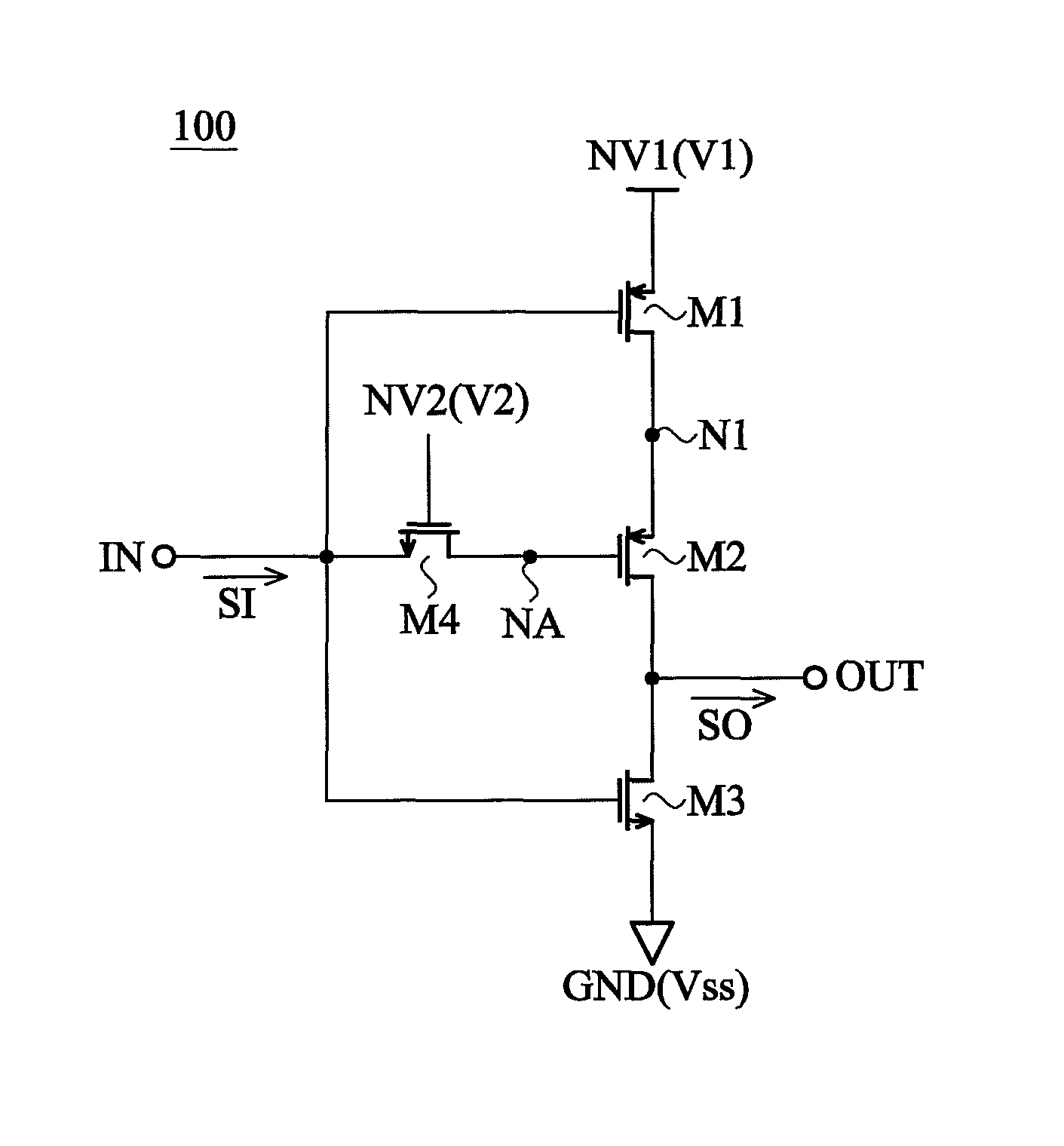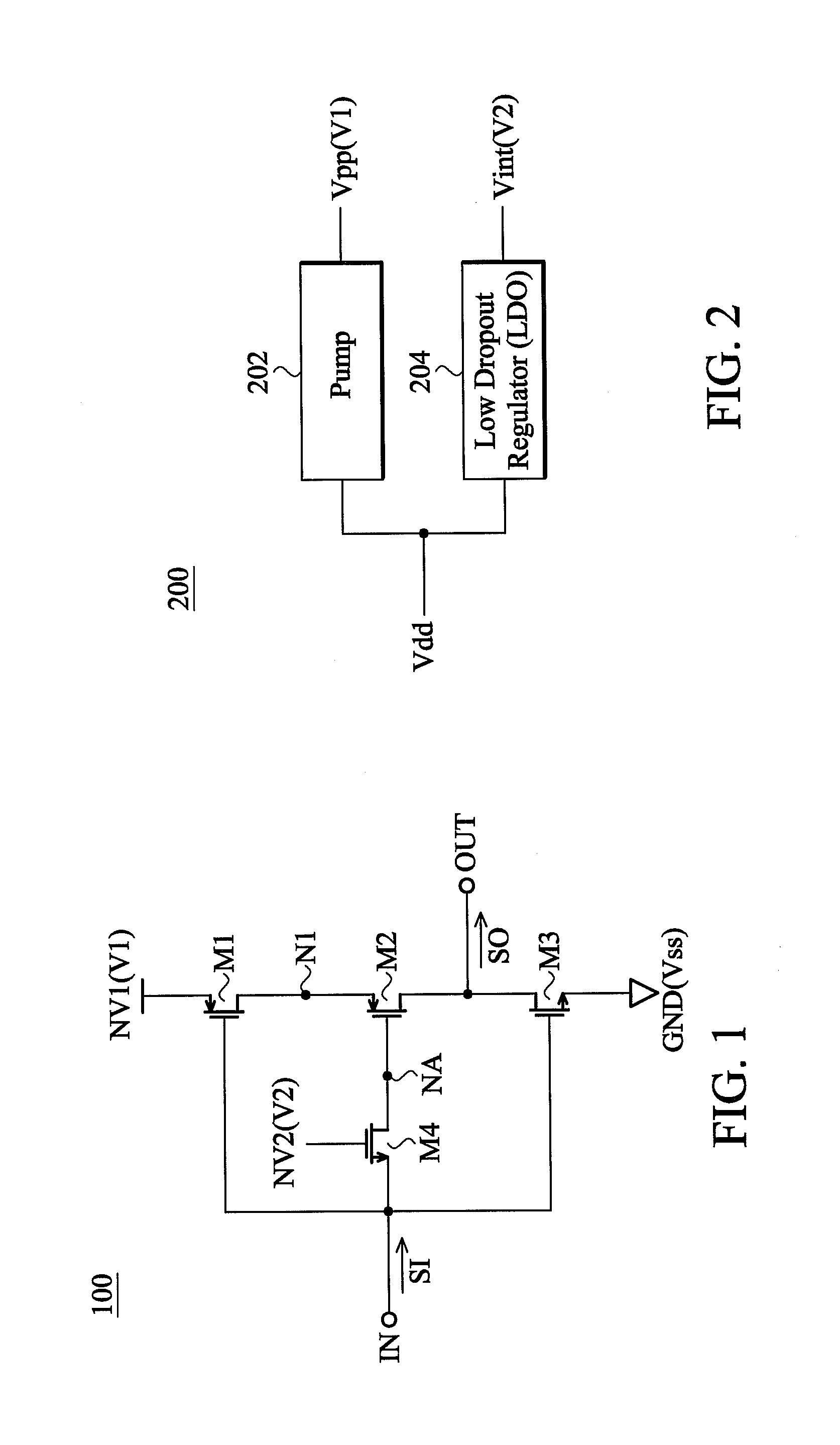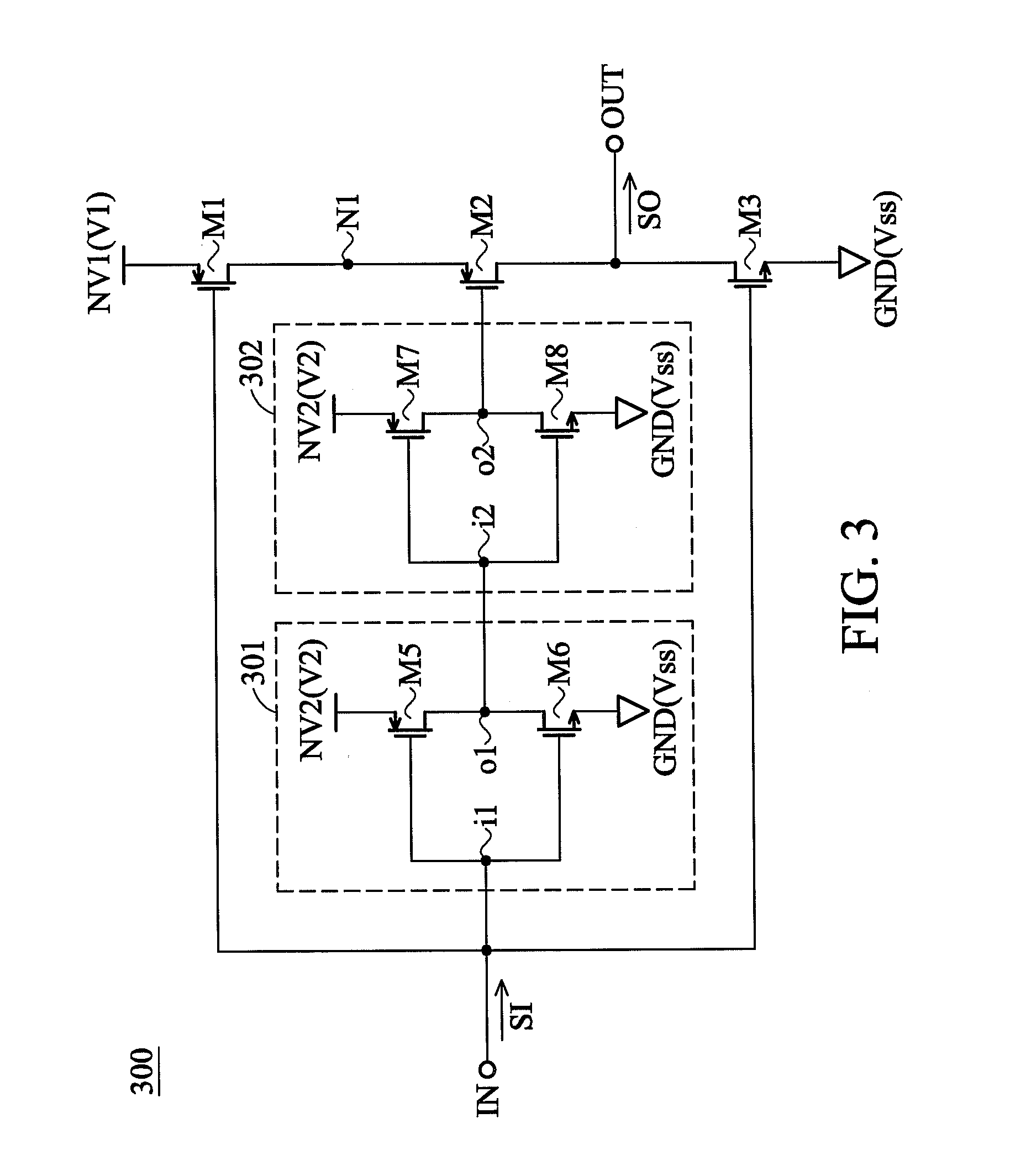Protecting circuit and control circuit for reducing leakage current
a technology of leakage current and protection circuit, applied in the direction of voltage/current interference elimination, circuit arrangement, reliability increasing modifications, etc., can solve the problem of reducing the efficiency of complementary metal-oxide-semiconductor, gidl is serious, and the gidl will become more serious, so as to reduce the voltage difference and reduce the gidl
- Summary
- Abstract
- Description
- Claims
- Application Information
AI Technical Summary
Benefits of technology
Problems solved by technology
Method used
Image
Examples
Embodiment Construction
[0014]FIG. 1 is a diagram for illustrating a protecting circuit 100 according to an embodiment of the invention. As shown in FIG. 1, the protecting circuit 100 comprises PMOS transistors (P-channel Metal-Oxide-Semiconductor Field-Effect Transistor) M1, M2, and NMOS transistors (N-channel Metal-Oxide-Semiconductor Field-Effect Transistor) M3, M4. A ground node GND is configured to provide a ground voltage Vss. A first voltage node NV1 is configured to provide a first voltage V1, and a second voltage node NV2 is configured to provide a second voltage V2, wherein each of the first and second voltages V1, V2 is higher than the ground voltage Vss.
[0015]FIG. 2 is a diagram for illustrating a conversion circuit 200 according to an embodiment of the invention. As shown in FIG. 2, an external voltage Vdd (i.e., work voltage Vdd) of the protecting circuit is converted into a pump voltage Vpp through a pump 202 (i.e., a step-up circuit), and the external voltage Vdd is converted into an intern...
PUM
 Login to View More
Login to View More Abstract
Description
Claims
Application Information
 Login to View More
Login to View More - R&D
- Intellectual Property
- Life Sciences
- Materials
- Tech Scout
- Unparalleled Data Quality
- Higher Quality Content
- 60% Fewer Hallucinations
Browse by: Latest US Patents, China's latest patents, Technical Efficacy Thesaurus, Application Domain, Technology Topic, Popular Technical Reports.
© 2025 PatSnap. All rights reserved.Legal|Privacy policy|Modern Slavery Act Transparency Statement|Sitemap|About US| Contact US: help@patsnap.com



